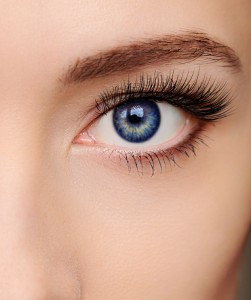Sugar in The Skin
ANSWER: Glycation
Glycation is an abnormal process involving sugar binding to a protein, for example fructose to collagen. When the bound sugar and protein are exposed to free radicals they form multiple protein combinations called Advanced Glycation End Products or AGEs. Advanced Glycation End Products hang around in the dermis (the thick layer of living tissue below the epidermis which forms the true skin) and manifest as sallowness in the skin.
You can see this reaction taking place in food; for example baked goods. Or in the delicious sugar shell on the top of a crème brûlée. This making of soft food to hard is glycation. When we eat it, the AGEs from these devilishly delicious nibbles are deposited in the skin.
Yes, eventually all carbohydrates are converted to sugar. Even things like brown rice. Less than in the eyeing you up in the fridge! Worst total body offender of the sugar world? That award goes to high fructose corn syrup – corn syrup that has undergone enzymatic processing to convert some of its glucose into fructose. This increases the rate of glycation by 10 TIMES when compared with regular glucose. People with diabetes should be particularly careful, as they will have twice as many AGE deposits in the skin as people without diabetes. And no surprises here but that lifestyle habit, smoking, increases the rate of AGE deposition too!
So what does it do to the skin, exactly?
- It makes collagen and elastin stiff and decreases skin elasticity (hello wrinkles)
- Inactivates antioxidant enzymes
- Increased death of fibroblasts and keratinocytes (not cool)
- Makes skin cells more sensitive to UV
Now that you’ve put down that New York Cheesecake slice… Here’s something you can DO.
First, find out if this something that could change your life. Why? It has been suggested that restricting your calorie intake is a way of reducing AGE formation and could increase your lifespan; but who wants to live on 1600 calories a day? Or if you do, don’t you need to know the exact effect this will have? What if its not what you want? Contact us. Find out what we do. Will it help you?
[1] Zouboulis CC. Acne and sebaceous gland function. Clin Dermatol. 2004;22:360–366.
[2] “Diet and Acne,” published in the Journal of the American Academy of Dermatology. Lead author Whitney P. Bowe MD, FAAD


